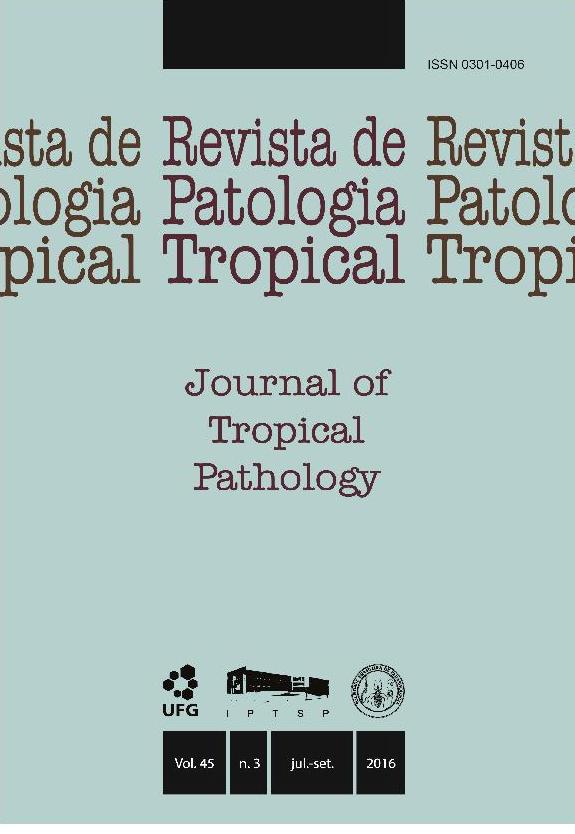DISTRIBUTION OF MOLLUSKS THAT TRANSMIT SCHISTOSOMIASIS IN THE ENDEMIC MUNICIPALITY OF SÃO BENTO, MARANHÃO, BRAZIL
DOI:
https://doi.org/10.5216/rpt.v45i3.43508Keywords:
Biomphalaria glabrata, Biomphalaria straminea, vector mollusks, Baixada Maranhense, mappingAbstract
The purpose of this study was to map the outbreak sites of Biomphalaria spp., transmiters of schistosomiasis mansoni, present in the municipality of São Bento, in the flat lands known as “Baixada Maranhense”, an area endemic to the occurrence of this disease. Sixteen of the twenty-two existing districts in the municipality were visited from July 2012 to August 2013. Snails were collected with the aid of a snail collecting sieve and tweezers, stored and
transported to the Human Parasitology Laboratory at the State University of Maranhão (São Luís), where they were placed in a glass aquarium and fed lettuce leaves. The mollusks were submitted to parasitological analysis in search of larval stages of Schistosoma mansoni and identified by Conchology and dissections. A total of eighteen outbreak sites were mapped, where 1.195 specimens of Biomphalaria glabrata and B. straminea were collected. All of
these mollusks tested negative for the parasite. Considering the results obtained and the epidemiological aspects related to the transmission of schistosomiasis, the mapping of vectors species sites in the municipality allows the location and identification of outbreaks, which may substantially aid local health services in the surveillance and control activities of schistosomiasis, and guide future epidemiological studies on schistosomiasis mansoni in the
region of the “Baixada Maranhense”.
Downloads
Downloads
Published
How to Cite
Issue
Section
License
The manuscript submission must be accompanied by a letter signed by all authors stating the full name and email address, confirming that the material has not been published or is under consideration for publication elsewhere, and agreeing to transfer copyright in all media and formats for Journal of Tropical Pathology. The authors will not be paid for published articles. They are solely responsible for the content of those articles, even if the Editor holds the right to adjust them to the norms of the journal.
The reviewers will not be paid for the peer review process.

